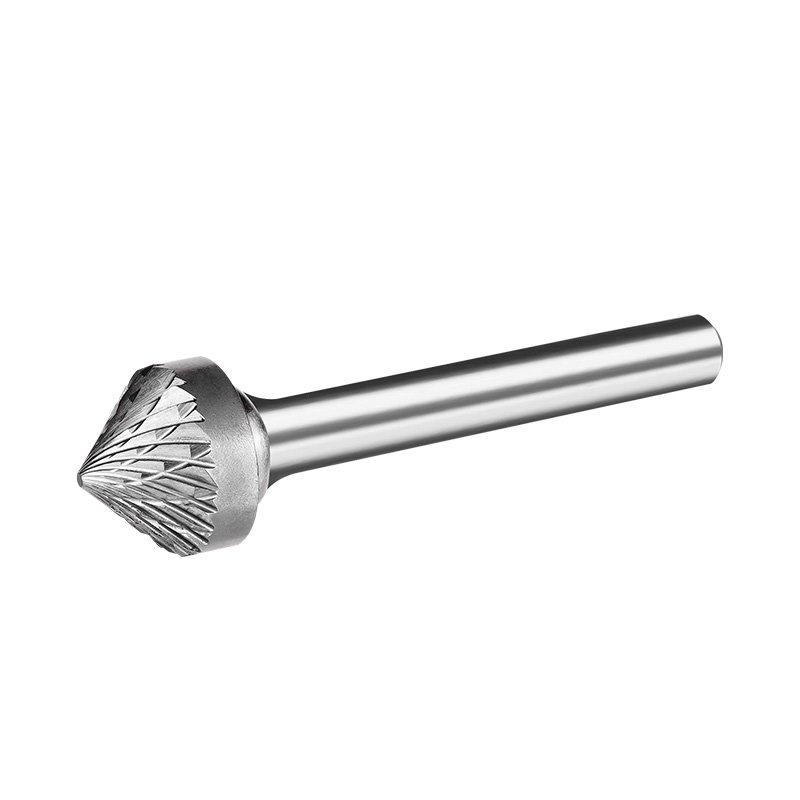Understanding the Speed Limits of Carbide Rotary Burs
Carbide Rotary Burs are precision-engineered cutting tools designed for high-speed material removal and shaping across a range of metals and non-metallic materials. Despite their robust construction, they are not immune to mechanical failure, especially when operated at speeds beyond their rated capacity. Excessive RPM (revolutions per minute) is one of the primary causes of tool failure, causing fracture, loss of control, or even dangerous ejection from the rotary device. To ensure safe and effective use of Carbide Rotary Burs, understanding and respecting their speed limitations is critical.

Know the Recommended Speed Range and Tool Size Correlation
Every Carbide Rotary Bur is designed with a recommended speed range based on its head size and flute geometry. As a general rule, smaller-diameter burs can safely operate at higher RPMs, while larger heads must be run slower to prevent centrifugal stress. For example, a bur with a 3mm head may be rated up to 60,000 RPM, while a 12mm head may be limited to just 15,000 RPM. Exceeding these limits puts the tool at risk of developing cracks due to vibration or centrifugal force. Always consult the manufacturer’s speed chart and match it with your power tool's speed output before use.
Ensure Proper Mounting and Tool Holder Compatibility
Incorrect mounting is a frequent contributor to Carbide Rotary Burs during high-speed use. If the bur is not fully and securely inserted into the collet or chuck of the rotary tool, it may wobble, vibrate, or dislodge under load. A high-speed spindle or die grinder must have a precisely matched tool holder or collet to grip the bur's shank firmly. Using a worn or mismatched collet increases the risk of slippage or ejection. Double-check that the shank size of the bur matches the chuck and that the tool is tightened according to specifications.
Avoid Lateral Pressure and Excessive Force
While Carbide Rotary Burs are made from extremely hard materials, they are also brittle. Applying sideways pressure or forcing the tool through the material can cause torsional stress and eventual breakage. At high RPMs, even a small side force can destabilize the bur. Users should allow the bur to cut with its flutes using light, controlled, forward movements, letting the rotation and sharp edges do the work. Refrain from using the bur like a lever or prying tool, which can cause dangerous failure.
Use RPM-Controlled Power Tools With Safety Features
Modern rotary tools and die grinders often come with speed control settings or soft-start features. These are crucial when using Carbide Rotary Burs because they help prevent sudden jolts or accidental overspeeding. Fixed-speed tools without regulation pose a higher risk of operating above the safe RPM range. Where possible, select a power tool with electronic feedback that can maintain constant speed under load and prevent surges during contact with the material.
Routine Inspection and Maintenance of the Burs
Before each use, inspect Carbide Rotary Burs for signs of wear, cracks, or bent shanks. Even microscopic damage can cause catastrophic failure when spinning at high speeds. If a bur appears damaged or has been dropped, discard it. In addition, regularly clean the flutes to prevent clogging, which can increase resistance and heat buildup—factors that compound stress during operation. Proper storage in individual cases or foam trays also prevents accidental dulling or chipping.
Conclusion
When used correctly, Carbide Rotary Burs are incredibly reliable and efficient tools. However, their performance and safety depend heavily on speed control, proper mounting, and responsible handling. By respecting manufacturer speed ratings, using compatible equipment, and avoiding misuse, users can prevent dangerous scenarios such as belt breakage or ejection. The goal is not just suitable tool performance, but also operator safety and machine longevity. Whether in a professional workshop or a personal tool room, Carbide Rotary Burs must be handled with precision and care.